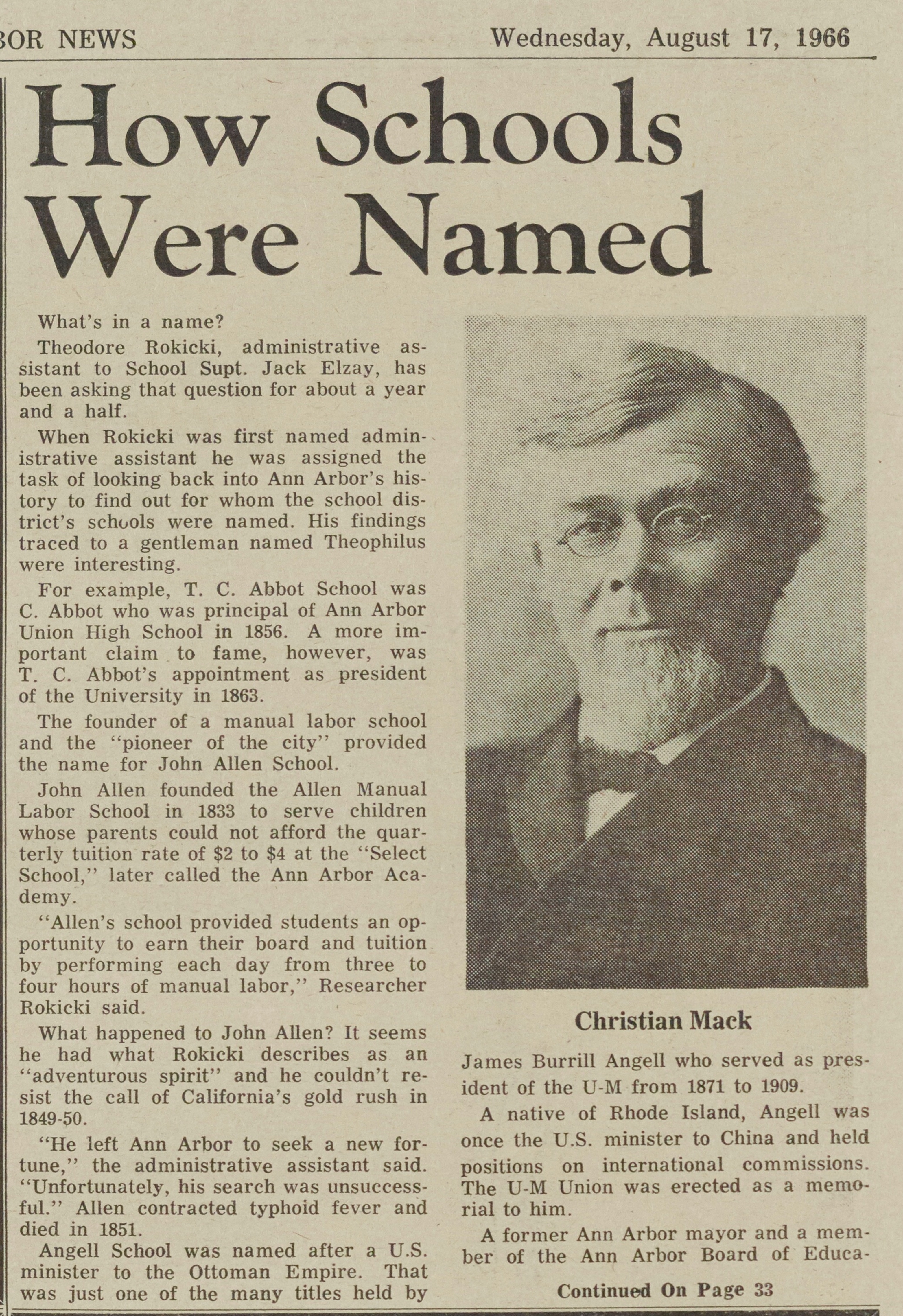Burns Park Cub Scout Skit Depicts The Beginning Of Ann Arbor, February 1952

Year:
1952
Published In:
Ann Arbor News, February 7, 1952
Caption:
Cub Scouts of Burns Park School Pack 101 will turn back the pages of time at their "Blue and Gold" anniversary dinner tonight at the First Presbyterian Church. Here is a preview of the skit depicting the beginnings of Ann Arbor. In coonskin caps are famous local pioneers John Allen (Doug Bailey, left) and George Rumsey (Tom Baumgardner). To the right are their wives Ann Allen (Bill Baumgardner, left) and Ann Rumsey (Dick Root). Adding the early American touch to the scene are "Huron Indians" Audie Stevens (left) and Mike Heffernan. The trusty steed at the extreme left is composed of Larry Lowe (in front) and Philip Chenoweth. The dinner and program commemorates the 42nd anniversary of the incorporation of the Boy Scouts of America.
Ann Arbor News, February 7, 1952
Caption:
Cub Scouts of Burns Park School Pack 101 will turn back the pages of time at their "Blue and Gold" anniversary dinner tonight at the First Presbyterian Church. Here is a preview of the skit depicting the beginnings of Ann Arbor. In coonskin caps are famous local pioneers John Allen (Doug Bailey, left) and George Rumsey (Tom Baumgardner). To the right are their wives Ann Allen (Bill Baumgardner, left) and Ann Rumsey (Dick Root). Adding the early American touch to the scene are "Huron Indians" Audie Stevens (left) and Mike Heffernan. The trusty steed at the extreme left is composed of Larry Lowe (in front) and Philip Chenoweth. The dinner and program commemorates the 42nd anniversary of the incorporation of the Boy Scouts of America.
Copyright
Copyright Protected
Teaching Positions Difficult To Obtain - In 1890

Parent Issue
Day
21
Month
August
Year
1973
Copyright
Copyright Protected
- Read more about Teaching Positions Difficult To Obtain - In 1890
- Log in or register to post comments
How Schools Were Named

Parent Issue
Day
17
Month
August
Year
1966
Copyright
Copyright Protected
- Read more about How Schools Were Named
- Log in or register to post comments
Allen develops community of learners

Parent Issue
Day
15
Month
March
Year
1999
Copyright
Copyright Protected
- Read more about Allen develops community of learners
- Log in or register to post comments
Forest Hill Cemetery, Grave Markers, Allen Family Plot, Washtenaw County Historical Society, 415 Observatory St, October 20, 2020 Photographer: Steve Jensen

Year:
2020
Copyright
Creative Commons (Attribution, Non-Commercial, Share-alike)
Name Schools Allen And Lakewood

Parent Issue
Day
8
Month
December
Year
1960
Copyright
Copyright Protected
- Read more about Name Schools Allen And Lakewood
- Log in or register to post comments
Real Estate Transfers

Parent Issue
Day
20
Month
June
Year
1889
Copyright
Public Domain
- Read more about Real Estate Transfers
- Log in or register to post comments
Real Estate Transfers

Parent Issue
Day
15
Month
May
Year
1890
Copyright
Public Domain
- Read more about Real Estate Transfers
- Log in or register to post comments
Real Estate Transfers

Parent Issue
Day
5
Month
April
Year
1893
Copyright
Public Domain
- Read more about Real Estate Transfers
- Log in or register to post comments
Real Estate Transfers

Parent Issue
Day
7
Month
May
Year
1890
Copyright
Public Domain
- Read more about Real Estate Transfers
- Log in or register to post comments